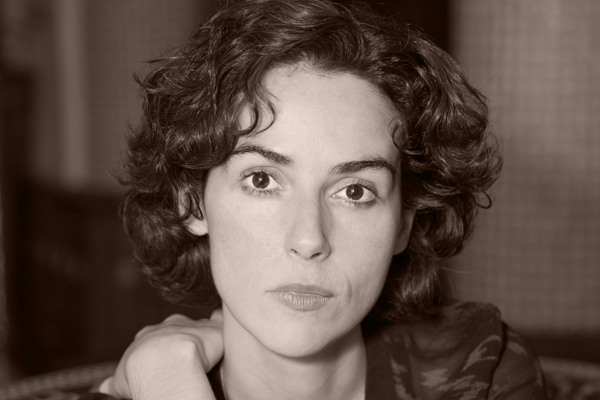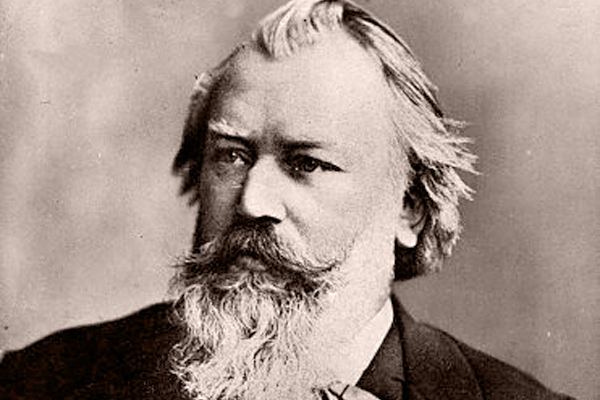Please review our Health & Safety policies before arriving at the concert venue. By purchasing tickets or ticket packages, you agree that you and any guests who use your tickets will comply with these policies.
NOVA welcomes you back to the concert hall with music that celebrates life with joy and thanksgiving.
Ludwig van Beethoven: Heiliger Dankgesang (Holy Song of Thanksgiving), op. 132
Brittany J. Green: ...to experience life
Clarice Assad: Metamorfose
Johannes Brahms: String Sextet No. 2 in G major, op. 36
Program Notes
by Jeff Counts
All five (or six, if you include the Grosse Fuge) of Beethoven’s “late” string quartets were written within two years of the Ninth Symphony and, like that orchestral landmark, they enjoy a holy status today in their respective genre. The first three (Op. 127, Op. 132, and Op. 130 chronologically) were written in 1825-26, but Opus 132 was briefly delayed by a serious bout of illness for Beethoven. Accordingly, the occasional nickname of the work is Heiliger Dankegesang (Holy Song of Thanksgiving), which comes from a longer phrase Beethoven applied to the quartet’s central movement which translates as “Song of holy thanksgiving to the divinity, from a convalescent, in the Lydian mode.” These words paint the picture of a man grateful to be recovered at last from sickness. As emotional counterpoint to the Song, there are musical moments in the quartet that display suffering akin to what Beethoven must have felt while laid low. A humble, hard-earned respect for his own mortality seems to watch over the entire score.
North Carolina-based composer Brittany J. Green provided the following commentary on her 2019 work for trumpet, piano, percussion, and live electronics:
How do we define the experience of life? Is it the breaths we take? The biological functions of existence and growth? Perhaps, living is defined through our time on Earth, the thoughts we have, our experiences with one another, or the impact we leave on our planet and the collective conscious. ...to experience life explores these varying explanations through fragmented gestures of growth and decay, juxtaposed with manipulated recordings of text that attempts to define the experience of life. The intertwining of these gestures and manipulations throughout the ensemble abstractly reflect the drama, nuance, and meaningful meaninglessness of life.
In one of the pre-recorded pieces of electronically manipulated text, Green lays out the average amount of time we each get “to experience life”. The numbers, expressed separately in years, months, weeks, days, hours, and finally, seconds, feel both staggeringly large and finitely small in Green’s guileless musical language.
Where Green explores life (and the gratitude we should all have for it) conceptually and elementally in her work, Clarice Assad confronts it head-on through one specific loss in Metamorfose (2017). When violist Matthew Lipman approached Assad about a work dedicated to the memory of his mother, she was “really nervous” at first “at the thought of doing it justice…” So, before setting pen to paper, Assad spent time with Lipman to learn as much as possible about him and his relationship with his mother. “By the time I started writing Metamorfose…” she recalls in her wonderful program note, “I had a good idea about…the sweet and the bittersweet moments, the final lingerings of pain that were still present in his voice…, the long journey of recovery into the person he is today.” Assad found solace in the natural world, namely in the “unexpectedly gruesome metamorphosis of a butterfly”, which mirrors the grieving process in humans with such graceful aptness. Metamorfose is a “musical portrait of two different people, in two different worlds and instances, bound by the passage of love and time.”
It is well known that Brahms’ unwillingness to provoke the ghost of Beethoven made the younger composer reluctant to publish symphonies or string quartets until late in his career. Less commented upon is the wealth of other ensemble writing that resulted from this trepidation. Brahms’ rich pre-quartet output includes two piano quartets, the horn trio, and two string sextets — each a category in search of a catalogue to this day. Though not as immediately successful as its predecessor, the String Sextet in G Major of 1865 was seen by most (Clara Schumann included) as a notable leap forward technically and artistically. In a rare bit of extramusical coding, Brahms included an A-G-A-H-E motif (H is the German equivalent of the note B; T, having no tonal equivalent, was simply left out) in the first movement that ambered the name of Agathe von Siebold, a woman he was engaged to in 1859 but did not marry.




